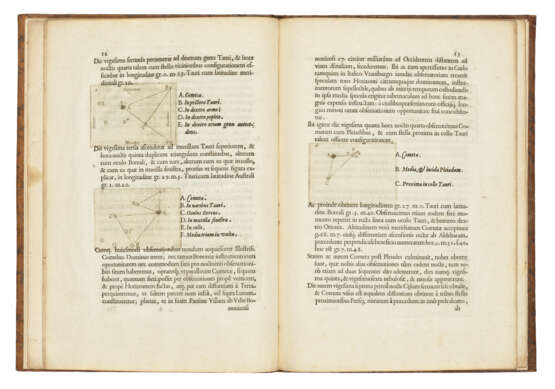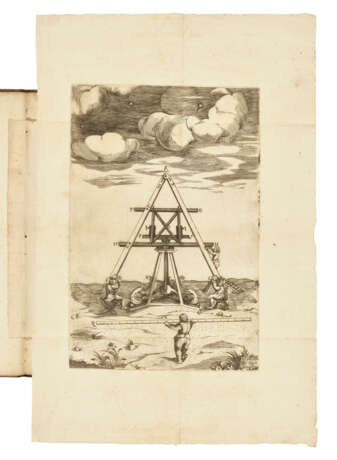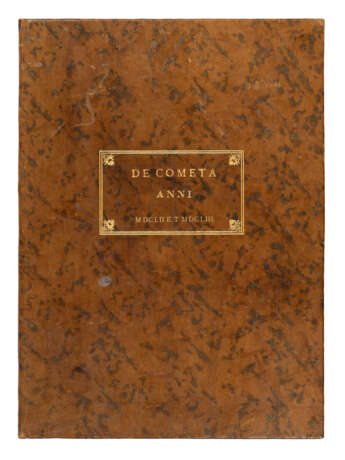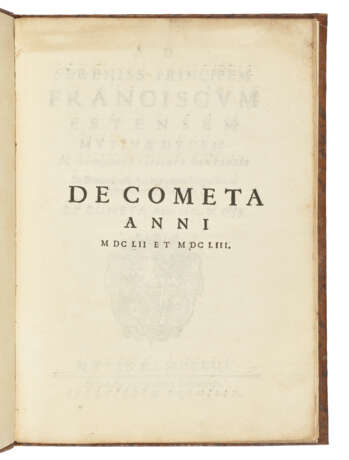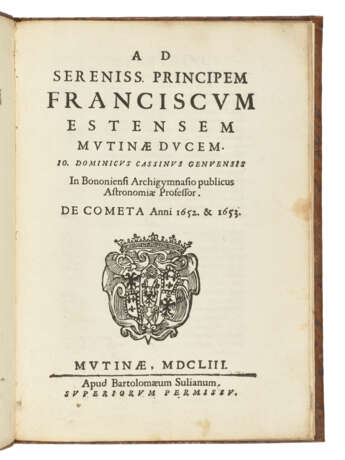ID 1450380
Lot 98 | CASSINI, Gian Domenico (1625-1712)
Estimate value
£ 10 000 – 15 000
De cometa anni MDCLII et MDCLIII. Modena: Bartolomaeus Sulianum, 1653.
The first publication, on comets, of the great observational astronomer Gian Domenico Cassini; the only copy of this work to have appeared at auction (RBH), with only a handful traceable in institutions worldwide. Cassini demonstrates for the first time through observation of the parallax that comets are celestial phenomena and not, as Aristotle had claimed, ignited exhalations from the earth. The first of an Italian family of astronomers who settled in France and were prominent in directing the activities of the French school of astronomy until the Revolution, Cassini was appointed principal chair of astronomy at Bologna in 1650 at just 25 years old. In 1652, just before Christmas, a comet was observed approaching the Earth. Cassini was then a guest at the astronomical observatory at Panzano belonging to his patron, the Marquis Cornelio Malvasia. Together with Malvasia, Cassini spent many nights using the observatory’s telescope to take accurate measurements of the comet’s position. His observations are recorded here, accompanied by engraved illustrations in the text showing the position of the comet with respect to certain reference stars. The last two pages are dedicated to a description of the instrument at Panzano, illustrated on a folding plate. The comet of 1652-3 was also observed by Hevelius in Gdansk between 20 December and 8 January and its parabolic orbit was calculated by Edmond Halley in 1705, using 54 observations, including those of Cassini. ). Not on COPAC; we have been able to trace fewer than 10 copies in libraries worldwide.
Folio (285 x 202mm). With folding engraved plate, panel engravings in text (repaired tear to half-title, a couple of tiny marginal holes or splits, minor browning). Later calf gilt (lightly rubbed). Provenance: Nosbüsch & Stucke, 19 November 2020, lot 38.
| Place of origin: | Italy, Europe |
|---|---|
| Auction house category: | Medicine & science, Books and manuscripts, Printed books |
| Place of origin: | Italy, Europe |
|---|---|
| Auction house category: | Medicine & science, Books and manuscripts, Printed books |
| Address of auction |
CHRISTIE'S 8 King Street, St. James's SW1Y 6QT London United Kingdom | |
|---|---|---|
| Preview |
| |
| Phone | +44 (0)20 7839 9060 | |
| Buyer Premium | see on Website | |
| Conditions of purchase | Conditions of purchase |
